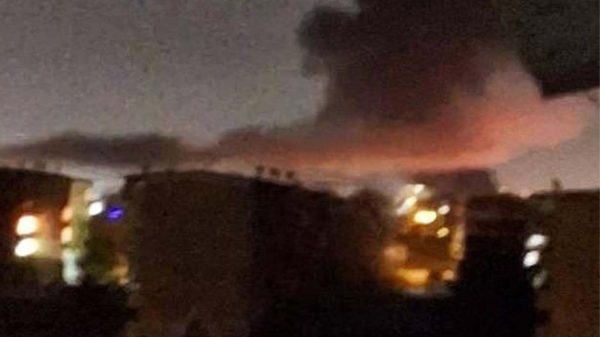A helicopter with a shooter will fly over a portion of the vast Gila Wilderness in southwestern New Mexico this week, searching for feral cows to kill.
U.S. Forest Service managers approved the plan on Feb. 16 to protect sensitive spots in the nation’s first designated wilderness area. The move sets the stage for legal challenges over how to handle unbranded livestock and other stray cows as drought deepens in the West.
The Gila National Forest issued the decision amid pressure from environmental groups who raised concerns about nearly 150 cattle whose hooves and mouths are damaging streams and rivers. Ranchers, meanwhile, have criticized the plan to shoot cows from a helicopter as animal cruelty. They said the action violates federal regulations and will be problematic when carcasses are left to rot.
A section of the Gila Wilderness will be closed to the public starting Monday, Feb. 20. A helicopter will launch on Feb. 23, with shooters spending four days looking for feral cattle in rugged areas that include the Gila River.
Forest Supervisor Camille Howes said the decision was difficult but necessary.
“The feral cattle in the Gila Wilderness have been aggressive towards wilderness visitors, graze year-round, and trample stream banks and springs, causing erosion and sedimentation,” she said in a statement.
Ranching industry groups and other rural advocates are concerned that the action taken in New Mexico could set a precedent as more grazing parcels become vacant across the West.
Ranchers say fewer people are maintaining fences and gone are the rural neighbors who used to help corral wayward cows. Some have left the business because of worsening drought, making water scarce for cattle, and skyrocketing costs for feed and other supplies.
The New Mexico Cattle Growers’ Association estimates roughly 90 grazing parcels are vacant in New Mexico and Arizona. Increased use of public lands—including hunting and hiking—also has resulted in knocked-down fences, the association said. Elk, too, are to blame for damaging fences meant to keep cows in check.
Tom Paterson, chair of the association’s wildlife committee, said the group has tried to find a solution that wouldn’t involve shooting feral cattle. He pointed to a recent directive issued by the New Mexico Livestock Board that allows neighboring permittees to gather and herd the cattle out.
With snow on the ground, access is limited. Paterson said federal official are not giving enough time to see if the directive will work. His organization also has accused the U.S. Forest Service of skirting its own regulations that call for a roundup first, and shooting as the last resort.
“Easy is not an exception to their own rules. Frustration is not an exception to the rules,” he said. “Our society should be better than this. We can be more creative and do it a better way where you’re not wasting an economic resource.”
Environmentalists in dozens of lawsuits filed in courts around the West over the years have argued that cattle ruin the land and water by trampling stream banks. They applauded the Forest Service’s decision.
“We can expect immediate results—clean water, a healthy river, and restored wildlife habitat,” said Todd Schulke, co-founder of the Center for Biological Diversity.
The position marks a shift from the environmental community’s stance on shooting other wildlife—from a fight over protecting bison at the Grand Canyon to annual complaints about the actions of the U.S. Department of Agriculture’s Wildlife Services, an agency often vilified for killing birds, coyotes, wolves, mountain lions, and other animals.
Just last month, environmentalists sued in Montana over a program aimed at managing grizzly bears. In 2021, conservation groups settled another lawsuit over Wildlife Services’ practices in Idaho. Environmental groups there and elsewhere have long claimed that the agency’s predator-control activities violate environmental laws.
But in New Mexico, the Center for Biological Diversity contends that water quality issues will only worsen if feral cattle aren’t removed. The group estimates that 50 to 150 cows graze, unauthorized, in the Gila Wilderness, a remote stretch that spans more than 870 square miles and is home to endangered Mexican gray wolves, elk, deer, and other wildlife.
The National Cattlemen’s Beef Association had asked the Forest Service to hold off on lethal action for a year after the New Mexico Cattle Growers’ Association had reached an agreement with federal officials following last year’s operation. The New Mexico group is expected to challenge the latest decision.
According to the Forest Service, the feral cattle problem dates back a half-century, when a cattle operation went out of business and subsequent grazing permits were suspended. Hundreds of unauthorized cattle have been removed over the years.
In 2022, a Forest Service contractor killed 65 cows in an aerial gunning operation similar to the one planned for this week.
Photos shared by ranchers of the 2022 operation showed dead cattle upside down in the Gila River. Federal officials said those carcasses were pulled out of the water. A survey done 90 days later found that no carcasses remained. Scavenging birds and other animals consumed them, officials said.
The upcoming operation will cover about 160 square miles.















what’s next wild horses, buffalo, sheep , etc politicians get stupider as Time goes on,, supervisor Howes is she the one that said burn down the forest ?
The Federal Agency more destructive than even the EPA is the Dept of the Interior. I truly hate them. Bunch of Communist Totalitarians who enjoy destroying Americans.
How absolutely assinine. Want a solution that does not take up public funds? Issue hunting permits, a $20 for a chance to get 1000 lbs of beef would sell like hotcakes and the animal would not go to waste. At bare minimum the animals culled should have to be field dressed and delivered to a butcher and donated to shelters.